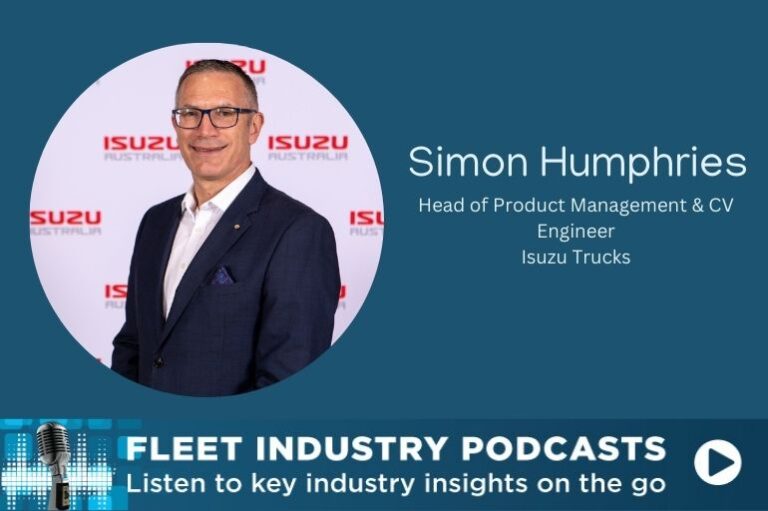In the latest episode of the Fleet News Group Podcast, Simon Humphries, Head of Product Management and Chief Engineer at Isuzu Trucks, offers a rare behind-the-scenes look at the company’s largest product overhaul in nearly two decades. And for transport managers and last mile delivery providers, the timing couldn’t be better.
The 2025 Isuzu range isn’t just about new features—it’s about making trucks easier to drive, safer for drivers, and more efficient for businesses facing rising operational pressures. From new powertrains to mandatory ADR changes, this episode breaks down what really matters when choosing your next delivery vehicle.
“It’s been 17 or 18 years since we’ve had a change of this scale,” says Humphries. “This is a full model refresh across the range, and the driving experience is what really sets it apart.”
Designed for Compliance—and Comfort
The launch of the new range lines up with three major Australian Design Rule changes coming into effect in 2025:
- Electronic Stability Control (ESC)
- Advanced Emergency Braking (AEB)
- ADR 80/04 (Euro VI) emissions compliance
These changes will soon be mandatory for all new trucks, so any fleet upgrade in 2025 must comply. According to Humphries, the update wasn’t an afterthought—it was baked into the engineering from day one.
“It’s not something you can just tack on. The electronic architecture was completely redesigned,” he explains.
This is particularly relevant for businesses operating in urban and suburban environments, where tighter emissions rules and increased safety demands are putting pressure on older fleets.
A New Light-Duty Experience
For last mile delivery providers, the light-duty N Series is often the workhorse. The 2025 version introduces a new 3.0-litre engine that replaces the outgoing 5.2-litre unit. Despite the smaller displacement, the new engine produces more power and torque, while offering lower emissions and better fuel efficiency.
Paired with it is a new 9-speed dual-clutch transmission with a torque converter—designed and patented by Isuzu’s own engineering team.
“The shift speed is better than a lot of car transmissions,” said Humphries. “It makes the truck incredibly easy to drive.”
This is a big deal for last mile providers who hire drivers from a variety of backgrounds—many of whom may not have experience behind the wheel of a traditional manual truck.
Podcast host Marc Sibbald put it to the test and found that the adaptive cruise control and stop-go functionality made the truck feel more like a car than a commercial vehicle.
“I could drive it assertively, and it responded instantly,” Sibbald noted.
Safety Tech Carried Over from Passenger Vehicles
Another bonus for city-based operators is the carryover of safety tech from the D-MAX and MU-X passenger vehicles. The new trucks include features like:
- Stereo camera with pedestrian detection
- Lane departure warning
- Speed sign recognition
- Adaptive cruise control
These features are now expected by professional drivers and fleet operators alike—especially when operating in crowded metro environments.
“Truck operators and fleets are expecting the same level of safety they get in their cars,” Humphries explained.
Service, Support and Smarter Costs
With so much new technology, Isuzu has also rethought its support offering. A six-year standard warranty and six years of roadside assist are now included as standard. The brand is also expanding its fixed-price service plans, which are increasingly popular among delivery fleets.
“It smooths out the monthly running costs and gives you certainty,” said Humphries.
This is particularly important for small to mid-size fleets looking to manage their overheads while expanding delivery capacity.
Final Takeaway: Drive It to Believe It
Humphries wrapped the conversation with a clear message for fleet buyers:
“Don’t just read the spec sheet—drive it. The experience of driving these trucks is what will sell it to you.”
With increased compliance demands, rising driver expectations, and the pressures of last mile logistics, the 2025 Isuzu range appears well-timed to meet the needs of today’s transport managers.
Listen to the full conversation with Simon Humphries on the Fleet News Group Podcast, available now on Spotify, Apple Podcasts, and YouTube.






